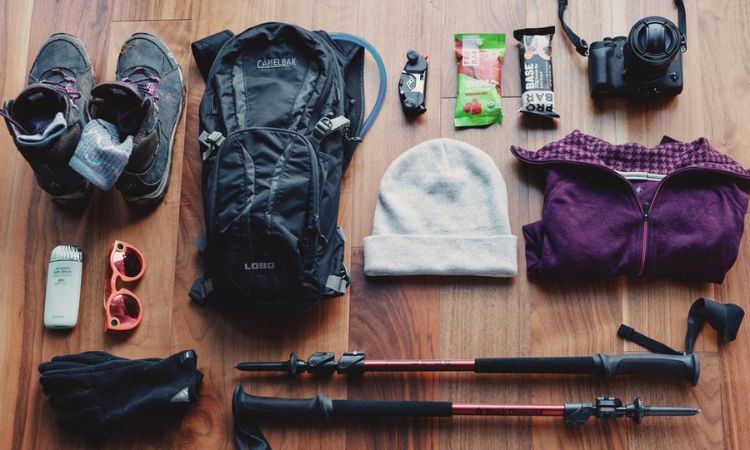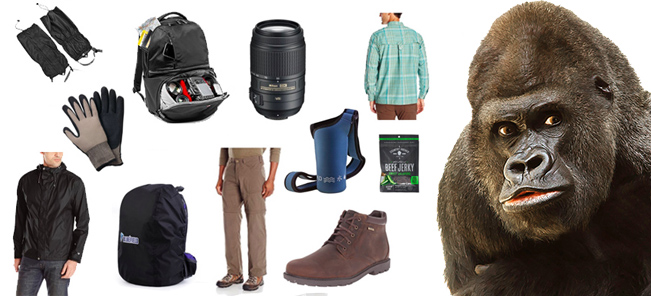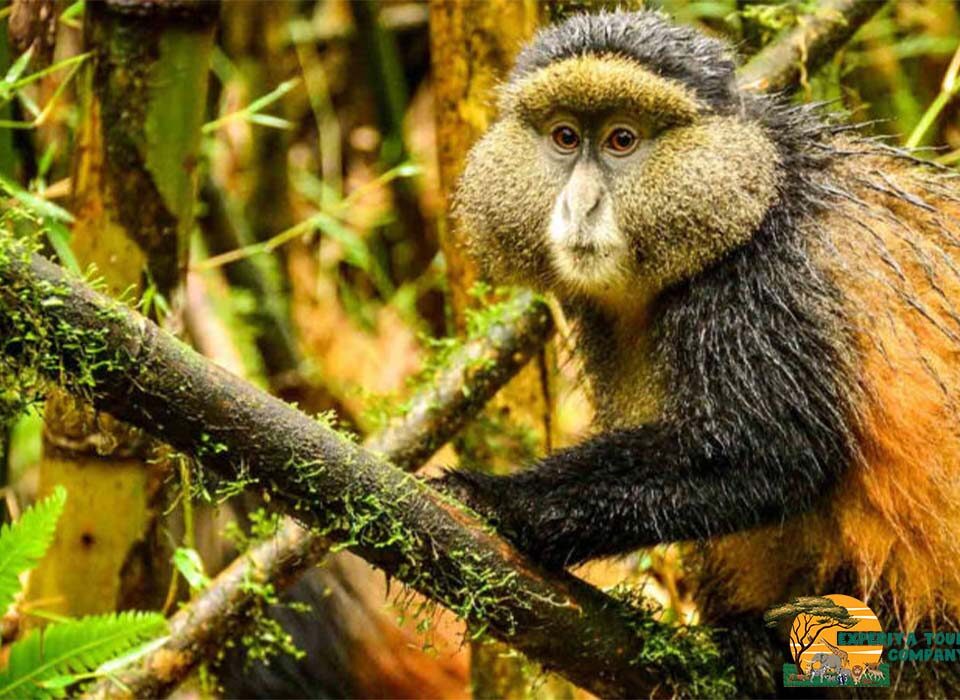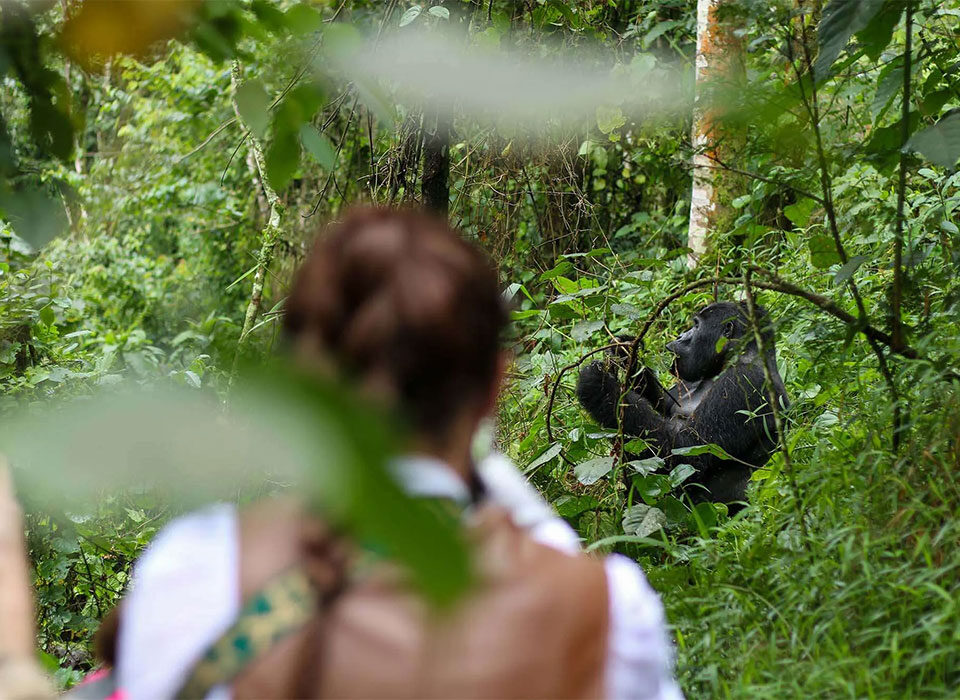
How difficult is gorilla trekking in Bwindi?
October 22, 2025
Can I trek gorillas twice in Uganda?
October 22, 2025What should I pack for gorilla trekking in Uganda?

What Should I Pack for Gorilla Trekking in Uganda?
Gorilla trekking in Uganda is one of the most rewarding adventures on the African continent. Few experiences compare to meeting the gaze of a mountain gorilla deep in the misty jungles of Bwindi Impenetrable National Park or Mgahinga Gorilla National Park. The sheer emotion of standing just meters from these majestic creatures in their natural home is something that stays with you forever. But before you embark on this unforgettable journey, preparation is key — and that begins with packing the right gear. Uganda’s tropical highland forests are dense, humid, and unpredictable, so what you bring can make the difference between an uncomfortable struggle and a smooth, enjoyable trek. If you’re wondering what to pack for gorilla trekking in Uganda, this detailed guide covers everything — from clothing and footwear to gear, gadgets, and little essentials that make your experience more comfortable.
Understanding the Environment Before You Pack
Gorilla trekking takes place in Uganda’s southwestern rainforests, where the weather can change from sunny to rainy within minutes. Bwindi and Mgahinga are located at elevations between 1,160 and 2,600 meters above sea level, meaning temperatures are generally cool but the humidity is high. The terrain is rugged — steep hills, thick vegetation, and muddy paths. You’ll be hiking through dense forest under canopies that drip with moisture, sometimes crossing rivers or slippery slopes. Packing correctly is less about looking stylish and more about being comfortable, dry, and protected.
Essential Clothing for Gorilla Trekking
1. Long-Sleeved Shirts and Trousers
Gorilla trekking involves walking through thick undergrowth with stinging nettles, vines, and branches. Long-sleeved shirts and full-length trousers protect your skin from scratches and insect bites. Choose lightweight, breathable, quick-dry fabric that wicks away sweat easily. Neutral earth tones like olive, brown, khaki, or forest green are best — they blend into the natural surroundings and don’t attract insects. Avoid bright colors like white or red, which can spook wildlife or get dirty easily.
2. Waterproof Hiking Boots
Your feet are your greatest asset on a trek, so invest in strong, waterproof hiking boots with good ankle support and traction. Trails can be muddy and slippery, especially after rainfall. Make sure you break them in before your trip to avoid blisters. Lightweight hiking socks made of moisture-wicking material will help keep your feet dry and comfortable. Pack at least two pairs for your trekking day.
3. Rain Jacket or Poncho
Bwindi’s rainforest lives up to its name — it can rain anytime, even during the dry season. A lightweight, waterproof rain jacket or poncho is a must-have. Go for one with a hood and ventilation openings so you stay dry without overheating.
4. Gardening Gloves
A surprisingly useful item! Trekking often involves grabbing tree branches or vines for balance, and some plants have thorns or rough bark. Gardening gloves protect your hands and make the hike more comfortable, especially when navigating steep or slippery terrain.
5. Layered Clothing
Mornings in the forest are cool, but you’ll warm up quickly once trekking starts. Dress in layers — a moisture-wicking base layer, a light fleece for warmth, and a rain jacket on top. This way, you can easily adjust to the temperature changes throughout the day.
6. Gaiters or Long Socks
Gaiters (or long socks pulled over your trousers) keep mud, insects, and moisture out of your boots. They also protect against ants and other crawling bugs common in the forest.
7. Hat and Sunglasses
A wide-brimmed hat helps shield you from sun and light drizzle, especially during open stretches. Sunglasses with UV protection are useful for travel days, though you may not need them much inside the dense forest canopy.

Gear and Accessories You Should Bring
1. A Good Backpack (Waterproof or Rain-Covered)
A daypack is essential for carrying your gear — camera, water, snacks, rain jacket, and documents. Choose a backpack with padded straps for comfort and a rain cover to keep your belongings dry. If your pack isn’t waterproof, line it with a plastic bag or dry sack for extra protection against moisture.
2. Reusable Water Bottle or Hydration Bladder
Gorilla trekking can take anywhere from one to six hours, depending on the gorillas’ location. Staying hydrated is crucial. Carry at least 2 liters of water, either in a reusable bottle or hydration bladder. Avoid single-use plastic bottles, as Uganda’s national parks encourage eco-friendly travel.
3. Energy Snacks
Bring light, high-energy snacks like energy bars, trail mix, dried fruit, or nuts to keep your stamina up during the trek. While meals are provided before and after the trek, snacks help you maintain energy levels along the trail.
4. Walking Stick
You’ll be provided with a walking stick at the park headquarters before your trek — and you’ll be glad you have it. It provides balance and stability on steep or slippery sections of the trail.
5. Camera or Smartphone for Photography
You’ll want to capture the incredible moment you lock eyes with a mountain gorilla. Bring a good-quality camera or smartphone with a protective case. However, remember the park rules — no flash photography is allowed, as it can disturb the gorillas. If your camera uses interchangeable lenses, a medium zoom (70–200mm) works perfectly.
6. Binoculars
Bwindi is not only home to gorillas but also more than 350 bird species and numerous monkeys. A small pair of binoculars enhances your experience, especially for birdwatching enthusiasts.
7. Face Mask
To protect the gorillas from human-transmitted diseases (especially respiratory infections), wearing a mask during your one-hour encounter is mandatory. Carry a few clean masks in a resealable bag.
Personal Essentials and Toiletries
1. Insect Repellent
The forest is home to mosquitoes and other insects, so DEET-based insect repellent or natural alternatives like citronella are a must. Apply before the trek and carry it with you for reapplication.
2. Sunscreen and Lip Balm
Even though you’re trekking under the forest canopy, UV rays can still reach your skin during open stretches or boat rides to nearby lodges. Bring a small bottle of sunscreen (SPF 30+) and a lip balm with SPF.
3. First Aid Kit
A small first aid kit is helpful for blisters, minor cuts, or headaches. Include essentials like plasters, antiseptic wipes, painkillers, bandages, and any personal medication.
4. Hand Sanitizer and Wet Wipes
You’ll be handling your walking stick, camera, and backpack straps throughout the trek — often after touching muddy trees or plants. Hand sanitizer and wet wipes help maintain hygiene, especially before eating.
5. Toiletries and Tissues
Carry a small pack of tissues or biodegradable toilet paper. There are no restrooms inside the forest, so you’ll appreciate having them if nature calls. Always follow your ranger’s instructions for responsible disposal.
Optional but Useful Items
1. Lightweight Poncho or Rain Cover for Camera Gear
Protecting your camera gear is essential in Bwindi’s unpredictable weather. A simple rain poncho or plastic bag works well if you’re caught in a sudden downpour.
2. Waterproof Phone Case or Ziplock Bags
Keep your phone, permits, and passport dry with waterproof pouches or ziplock bags. They’re cheap, light, and invaluable in the jungle.
3. Trekking Poles (if you prefer your own)
While walking sticks are provided, experienced hikers often prefer their own collapsible trekking poles for balance and joint support.
4. Change of Clothes
After the trek, you’ll likely return muddy or sweaty. A clean change of clothes at your lodge makes for a refreshing end to the day.
5. Power Bank
Many lodges in remote areas have limited electricity or solar power. Carry a fully charged power bank to recharge your phone, camera, or other devices.
Packing Tips for a Seamless Gorilla Trekking Experience
Pack light but smart. Focus on essentials, and remember your porter can only carry so much comfortably. Use dry bags or ziplocks to keep electronics and documents safe from moisture. Label your gear, check luggage restrictions for small aircraft, and leave valuables behind.
Support from Porters and Rangers
Even if you pack well, trekking through Bwindi’s dense jungle can still be demanding. Hiring a local porter to help carry your backpack is one of the best decisions you can make. It costs around USD 20–30, but the benefits are invaluable — you’ll trek lighter, focus better, and directly support local livelihoods. Uganda Wildlife Authority rangers will also guide and assist you throughout the trek. Their experience ensures your safety, comfort, and the best possible encounter with the gorillas.
Why You Should Trek with Experiya Tour Company
Packing right is just one part of your gorilla trekking adventure — the other is traveling with a trusted, professional safari operator who knows every detail of the journey. That’s where Experiya Tour Company stands out. Experiya is a leading Ugandan safari operator specializing in gorilla trekking tours, wildlife safaris, and cultural experiences across Uganda and East Africa. Their team provides end-to-end support — from securing your gorilla permits to advising on what to pack, arranging accommodations, and ensuring smooth transport to Bwindi or Mgahinga. Their experienced guides know the forests intimately, ensuring that your trek is safe, well-paced, and deeply enriching. Whether you’re a first-time visitor or a seasoned explorer, Experiya Tour Company creates tailor-made itineraries that balance adventure, comfort, and authenticity. If you’re ready to meet the mountain gorillas and explore Uganda’s breathtaking wilderness, make sure your journey is handled by professionals who care about every detail — travel with Experiya Tour Company, and experience the magic of the gorilla kingdom the right way.



